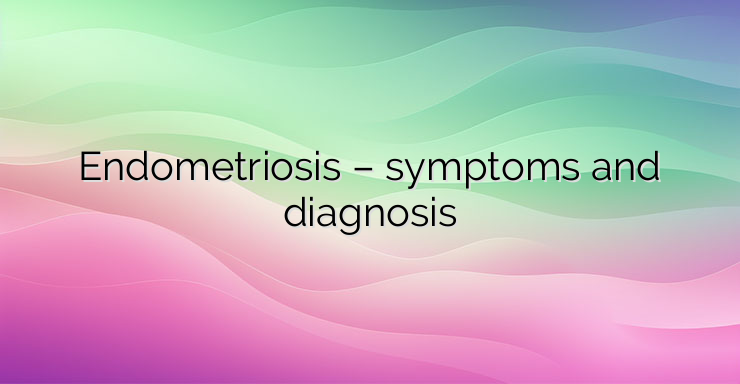Endometriosis is one of the most common gynecological diseases, affecting between 5 and 10% of women of reproductive age. It is defined as the presence of glands and connective tissue of the endometrium outside the uterus. This ectopic (not in the typical place) tissue leads to a chronic inflammatory process that is dependent on estrogens. Because the condition is chronic and recurrent, it is important to work closely with an obstetrician-gynecologist to determine the appropriate immediate treatment based on symptoms, pregnancy plans, and quality of life. The reasons for the development of endometriosis are still not completely clear, and for now there are only hypotheses at the level of theory. The possibility of the condition is known to increase in women with a family history of endometriosis, obstruction (blockage) of the genital tract and inability to have a menstrual cycle. Endometriosis is not always symptomatic. When it is, the main symptom is cyclical pain – pain during normal activities such as menstruation (dysmenorrhea – painful menstruation), sexual intercourse (dyspareunia), urination (dysuria), going to the toilet (dyshesia). Low back or abdominal pain and chronic pelvic pain are also not excluded. Chronic pelvic pain is defined as non-cyclic abdominal or pelvic pain for more than 6 months. As you can imagine, endometriosis is not the only disease that causes discomfort and pain. However, new-onset pelvic pain during menstruation in women of reproductive age directs clinical thought first to endometriosis as a possible cause of the symptom. NEWS_MORE_BOX During a routine gynecological examination, the position, ramus and mobility of the uterus should be assessed. The growth of functioning endometrium outside the uterine cavity leads to the formation of adhesions, which can change the location of the uterus and fix it in a weakly mobile position. Therefore, a fixed, retroverted (inverted) uterus is a sign of adhesions. Thickened and rough uterine ligaments and pain on examination suggest deep infiltrating endometriosis, and palpation of formations in the adnexal spaces on both sides of the uterus points to ovarian involvement. If endometriosis is suspected, the examination should continue with ultrasound. Thus, ovarian cysts and uterine fibrinoids (connective tissue) characteristic of monometrosis can be diagnosed. This condition is one of those that raise the CA-125 antigen level without ovarian carcinoma being present. Gynecological examination and ultrasound examination can only find indirect signs of the development of endometriosis. The gold standard for the diagnosis of this condition remains direct visualization by laparoscopy and histological confirmation of a biopsy or material taken.During the laparoscopy, the severity of the disease can be assessed by the distribution and localization of the endometrial lesions, as well as the involvement of individual organs. There is a classification based on the laparoscopic finding, but it has limited application in clinical practice because the stage often does not correspond to the patient’s symptoms. It is not always necessary to perform a laparoscopy, however. Severe dysmenorrhoea unresponsive to over-the-counter pain relievers such as aspirin, paracetamol, or drotaverine, thickened and rough uterine ligaments, and the result of an ultrasound examination for an ovarian cyst are sufficient to suspect endometriosis. In such cases, laparoscopy for the purpose of diagnosis is not necessary before starting medical treatment. Laparoscopy is usually performed when the operator is ready to remove the lesions if they are uniometrial, because there are data that surgical intervention leads to disappearance of pain in more than 50% of women with endometriosis. Follow the following articles to find out more about the medical treatment of monometrosis.


Leave a Reply